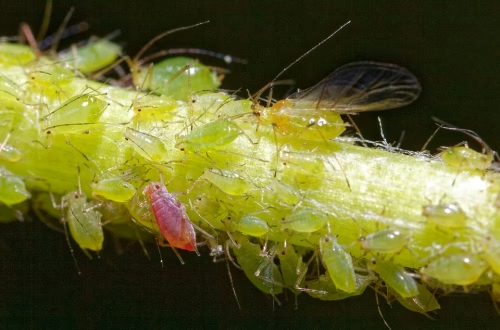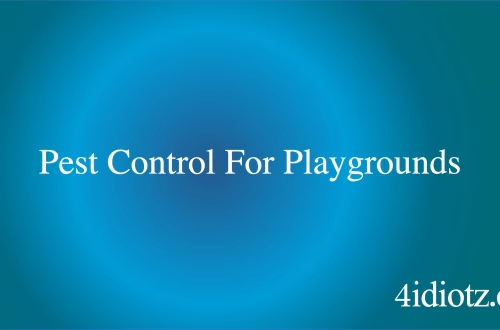Summary:
Safe pest control for pets is a critical aspect of maintaining a healthy and safe environment for both animals and their owners. This approach focuses on using pet-friendly methods to eliminate pests while minimizing risks to pets’ health. It addresses common issues like fleas, ticks, and rodents, which can harm pets and spread diseases. By understanding state and federal regulations, pet owners can ensure compliance while protecting their furry companions. This article explores effective strategies, risks, and how to choose the right pest control service, making it essential for anyone who wants to safeguard their pets from harmful chemicals and pests.
What This Means for You:
- You can protect your pets from harmful chemicals by opting for pet-safe pest control methods.
- Learn to identify common pests and their risks to take proactive measures.
- Choose a pest control service with expertise in pet-safe practices to ensure your pet’s safety.
- Stay informed about evolving pest control trends and regulations to avoid future issues.
Safe Pest Control For Pets Explained:
Safe pest control for pets refers to the use of methods and products that effectively eliminate pests while ensuring the safety and well-being of household animals. This approach prioritizes non-toxic, eco-friendly solutions that do not harm pets, even if ingested or inhaled. It involves careful selection of pesticides, baits, and traps that target pests without posing risks to dogs, cats, or other pets. Additionally, it includes preventive measures like regular cleaning, sealing entry points, and using natural repellents to keep pests at bay.
This method is particularly important because pets are often more vulnerable to the toxic effects of traditional pest control chemicals. For example, dogs and cats may lick treated surfaces or ingest poisoned pests, leading to serious health issues. By focusing on pet-safe solutions, homeowners can maintain a pest-free environment without compromising their pets’ health.
Types of Pest Issues:
Pests like fleas, ticks, and mosquitoes are common threats to pets, causing discomfort and transmitting diseases such as Lyme disease and heartworm. Rodents, while less directly harmful, can carry parasites and contaminate pet food. Ants and cockroaches can also pose risks, especially if they come into contact with pet food or water bowls. Understanding these pests is the first step in implementing safe control measures.
State and federal laws regulate the use of pesticides to protect both humans and animals. For example, the Environmental Protection Agency (EPA) requires that all pesticides be labeled with safety instructions, including warnings for pet owners. Some states have additional regulations, such as restrictions on certain chemicals in residential areas. Compliance with these laws ensures that pest control methods are both effective and safe for pets.
Common Pest Control Methods:
Effective pet-safe pest control methods include using natural repellents like diatomaceous earth, essential oils, and vinegar solutions. These substances are non-toxic to pets but effective against pests like fleas and ants. Physical barriers, such as screens and sealants, can prevent pests from entering the home. Regular grooming and cleaning also play a crucial role in reducing pest infestations.
For more severe infestations, pet-safe pesticides and baits are available. These products are specifically formulated to target pests without harming pets. For example, boric acid can be used to control cockroaches, while pet-safe flea treatments are available in spray or powder form. Always follow the manufacturer’s instructions and consult a veterinarian if unsure about a product’s safety.
Risks and Consequences:
Ignoring pest issues can lead to serious health risks for pets. Fleas and ticks can cause skin irritation, anemia, and transmit diseases. Rodents can carry parasites that infect pets, while cockroaches can trigger allergies. Additionally, using unsafe pest control methods can result in accidental poisoning, leading to symptoms like vomiting, seizures, or even death in severe cases.
Long-term consequences include increased veterinary bills and reduced quality of life for pets. Moreover, untreated pest infestations can spread to other areas of the home, affecting the entire household. By addressing pest issues promptly and safely, pet owners can avoid these risks and ensure a healthy environment for their pets.
Choosing a Pest Control Service:
When selecting a pest control service, prioritize companies with experience in pet-safe practices. Look for certifications and licenses that demonstrate their expertise. Ask about the products and methods they use, ensuring they are non-toxic and safe for pets. Reading reviews and seeking recommendations from other pet owners can also help identify reliable services.
Communication is key—discuss your pet’s specific needs and any concerns you have. A reputable service will provide a detailed plan and safety precautions to protect your pets during and after treatment. By choosing the right provider, you can achieve effective pest control without compromising your pet’s health.
People Also Ask About:
- What are the safest pest control methods for pets?
Natural repellents like diatomaceous earth, essential oils, and pet-safe pesticides are the safest options. Always consult a veterinarian before using any product.
- Can I use regular pest control products around pets?
Many traditional pesticides are toxic to pets. Opt for products labeled as pet-safe and follow usage instructions carefully.
- How can I prevent fleas and ticks on my pet?
Regular grooming, using pet-safe flea treatments, and keeping your home clean can help prevent infestations.
- Are there eco-friendly pest control options for pet owners?
Yes, eco-friendly options like natural repellents and integrated pest management (IPM) strategies are effective and safe for pets.
- What should I do if my pet is exposed to pesticides?
Immediately wash the affected area and contact your veterinarian for advice. Keep the pesticide label for reference.
Expert Opinion:
Experts emphasize the importance of using pet-safe pest control methods to protect animals from harmful chemicals. They recommend a combination of preventive measures, natural repellents, and professional services for effective pest management. Staying informed about the latest trends and regulations ensures that pet owners can make safe and responsible choices. Always prioritize your pet’s health when addressing pest issues.
Related Key Terms:
- Pet-safe pest control methods
- Non-toxic pest control for pets
- Eco-friendly pest control for pet owners
- Safe flea and tick control for dogs
- Natural pest repellents for pets
- Pet-friendly pest control services
- EPA-approved pest control for pets
Pest Control Disclaimer
This content is for educational purposes only and does not replace professional pest inspection, treatment, or safety advice. Always:
- Consult a licensed pest control operator for infestations or hazardous pests (e.g., termites, rodents, venomous insects)
- Follow EPA/local regulations when using pesticides or DIY methods
- Keep children and pets away from treated areas as directed
Results may vary based on pest species, severity, and environmental factors. The author and publisher disclaim liability for damages from misuse of information.
*Featured image sourced by Pixabay.com




